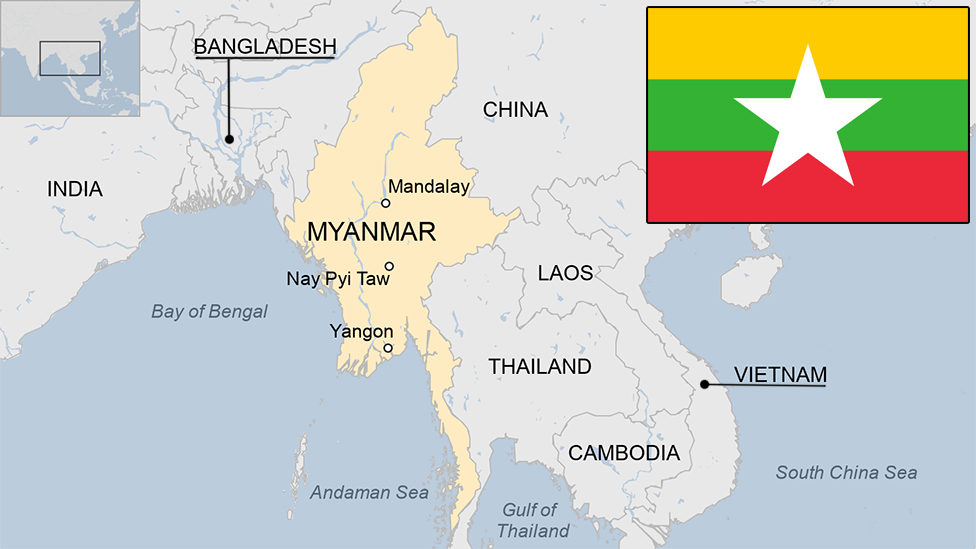Myanmar earthquake: Images from Bagan historic sites
- Published

The 6.8-magnitude earthquake damaged dozens of ancient structures
A 6.8-magnitude earthquake in central Myanmar on Wednesday killed four people and damaged dozens of ancient structures dotting the plains of Bagan.
President Htin Kyaw visited the area on Thursday to see the damage and discuss how to repair it with local officials.
Bagan's spectacular plain has more than 2,200 pagodas, temples, monasteries and other structures on it, most left over from the city's heyday between the 11th and 13th Centuries, when it was the capital of the regions that went on to form modern Myanmar.
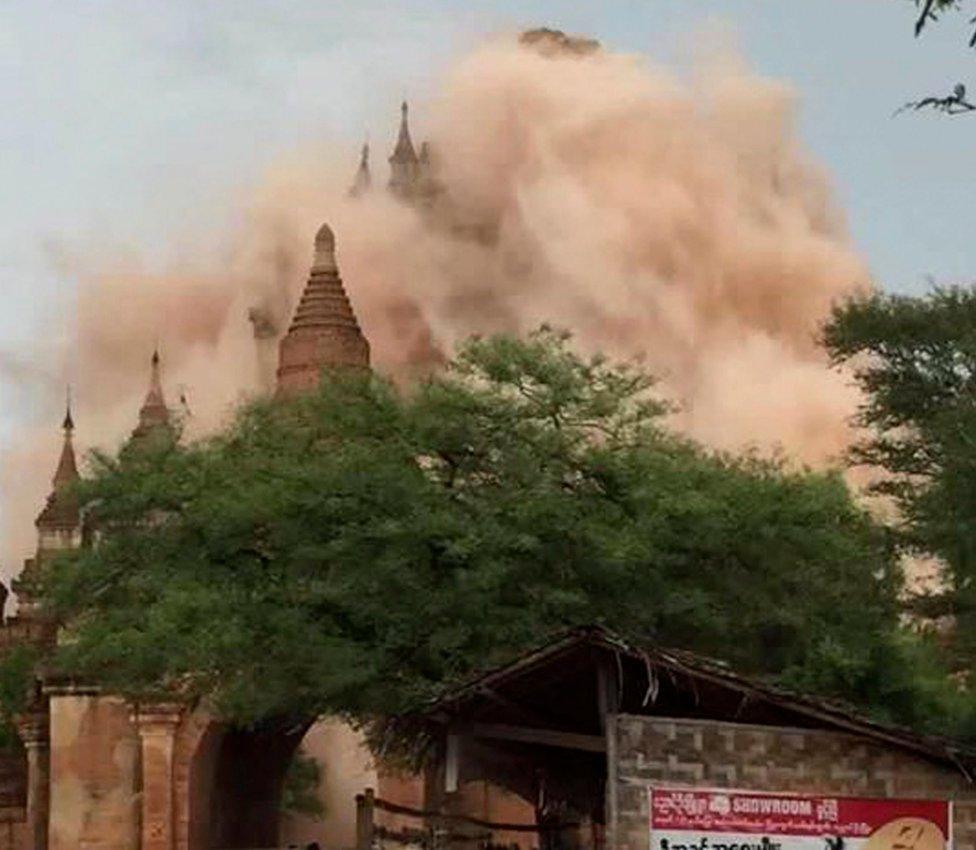
No-one in Bagan was killed in the quake, although four people died elsewhere
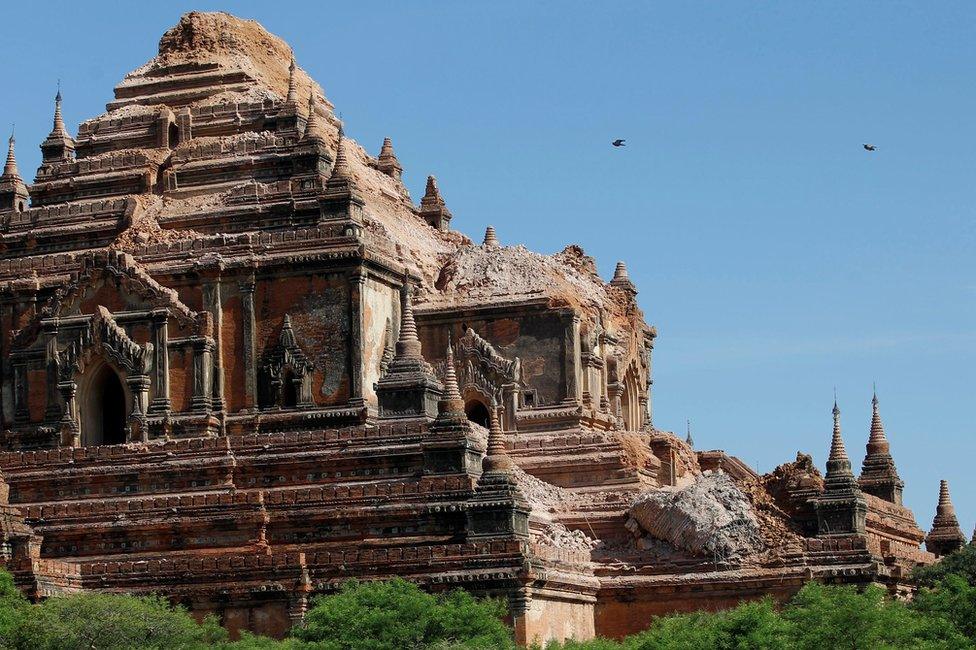
The Sulamani temple was one of the most famous to be damaged

Wednesday's was just the latest, and far from the most damaging, of hundreds of quakes to hit Bagan since its famous sites were built between the 10th and 14th centuries

With many years of hasty - some critics say too hasty - restoration in the past, a lot of what fell was in fact more recent material

Bagan is one of Asia's most famous historic sites and is the centrepiece of Myanmar's fast-growing tourism industry
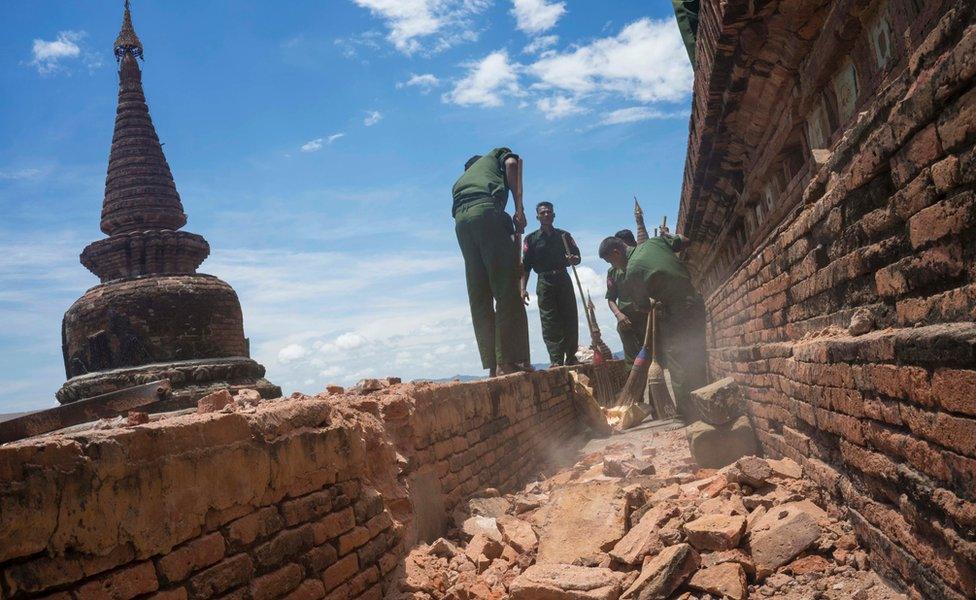
Military personnel were drafted in to clean up
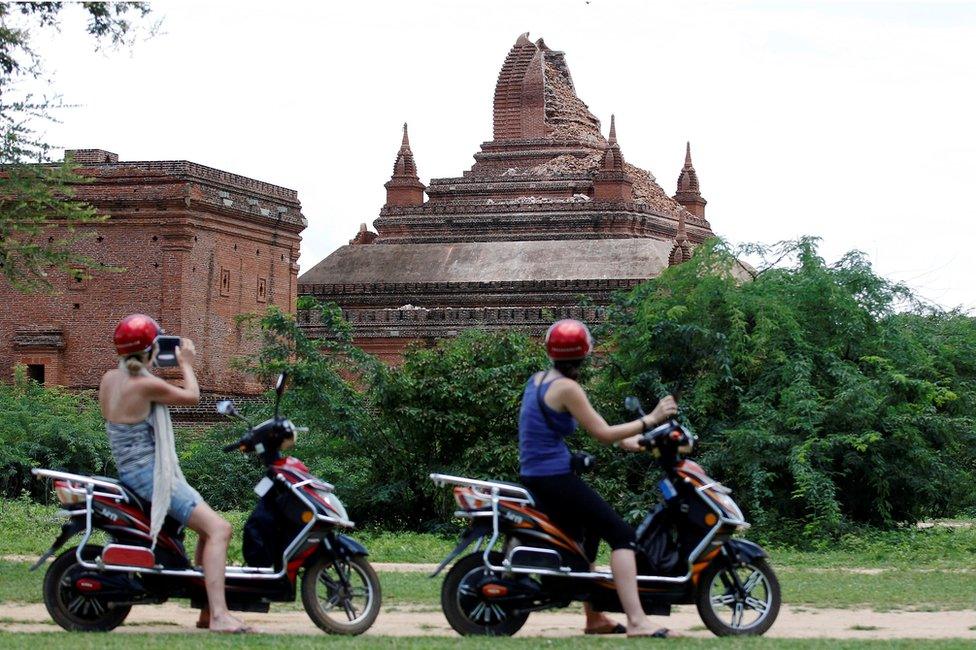
After the quake, some tourists still took pictures of the sights, but from a safe distance

Thousands of structures dot the plains of Bagan, which was once the capital of the Kingdom of Pagan - an early version of what is now Myanmar

The quake was also felt in neighbouring Bangladesh
- Published24 August 2016

- Published12 March 2014

- Published26 May 2023
